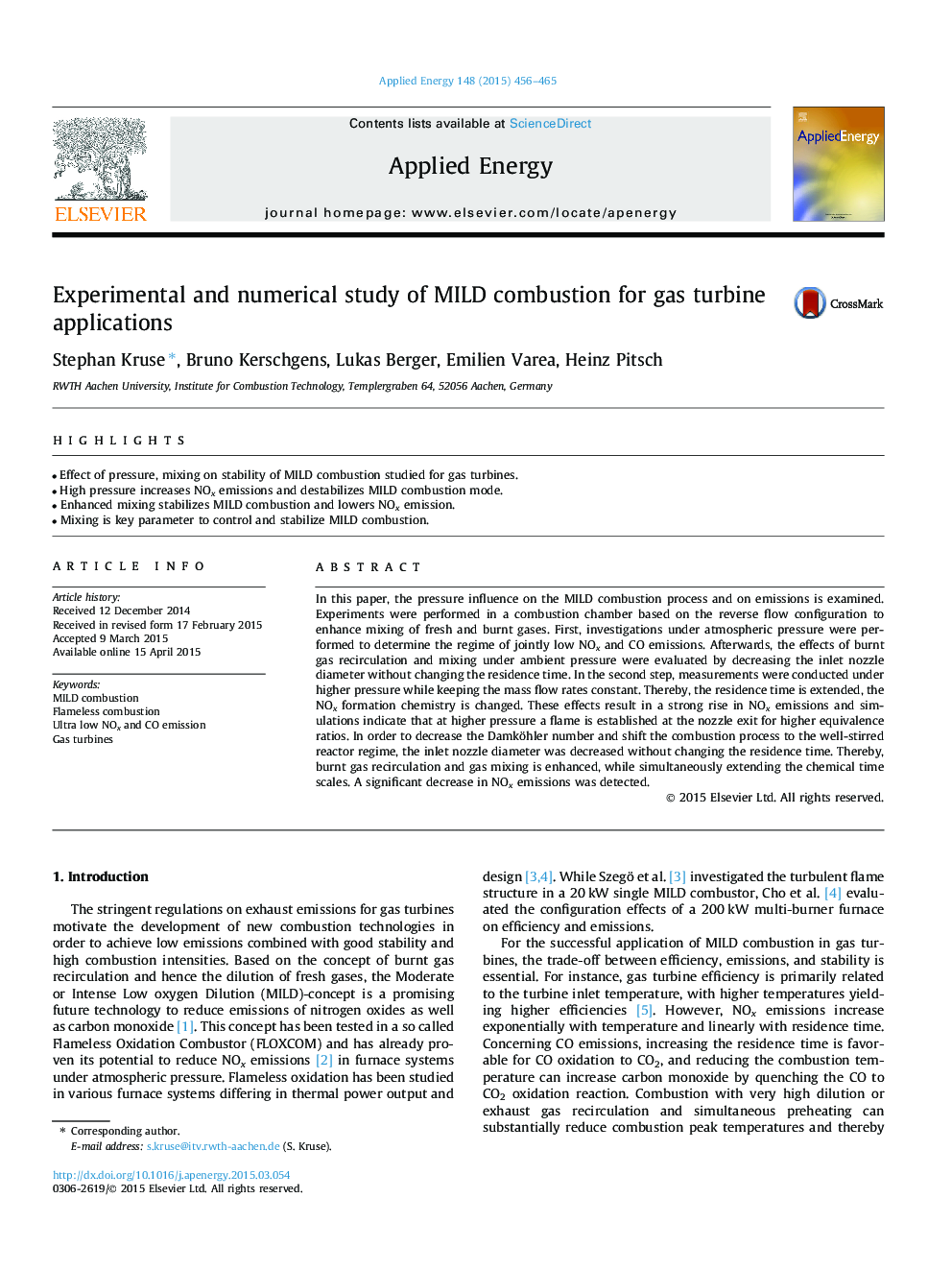| Article ID | Journal | Published Year | Pages | File Type |
|---|---|---|---|---|
| 6687340 | Applied Energy | 2015 | 10 Pages |
Abstract
In this paper, the pressure influence on the MILD combustion process and on emissions is examined. Experiments were performed in a combustion chamber based on the reverse flow configuration to enhance mixing of fresh and burnt gases. First, investigations under atmospheric pressure were performed to determine the regime of jointly low NOx and CO emissions. Afterwards, the effects of burnt gas recirculation and mixing under ambient pressure were evaluated by decreasing the inlet nozzle diameter without changing the residence time. In the second step, measurements were conducted under higher pressure while keeping the mass flow rates constant. Thereby, the residence time is extended, the NOx formation chemistry is changed. These effects result in a strong rise in NOx emissions and simulations indicate that at higher pressure a flame is established at the nozzle exit for higher equivalence ratios. In order to decrease the Damköhler number and shift the combustion process to the well-stirred reactor regime, the inlet nozzle diameter was decreased without changing the residence time. Thereby, burnt gas recirculation and gas mixing is enhanced, while simultaneously extending the chemical time scales. A significant decrease in NOx emissions was detected.
Related Topics
Physical Sciences and Engineering
Energy
Energy Engineering and Power Technology
Authors
Stephan Kruse, Bruno Kerschgens, Lukas Berger, Emilien Varea, Heinz Pitsch,
